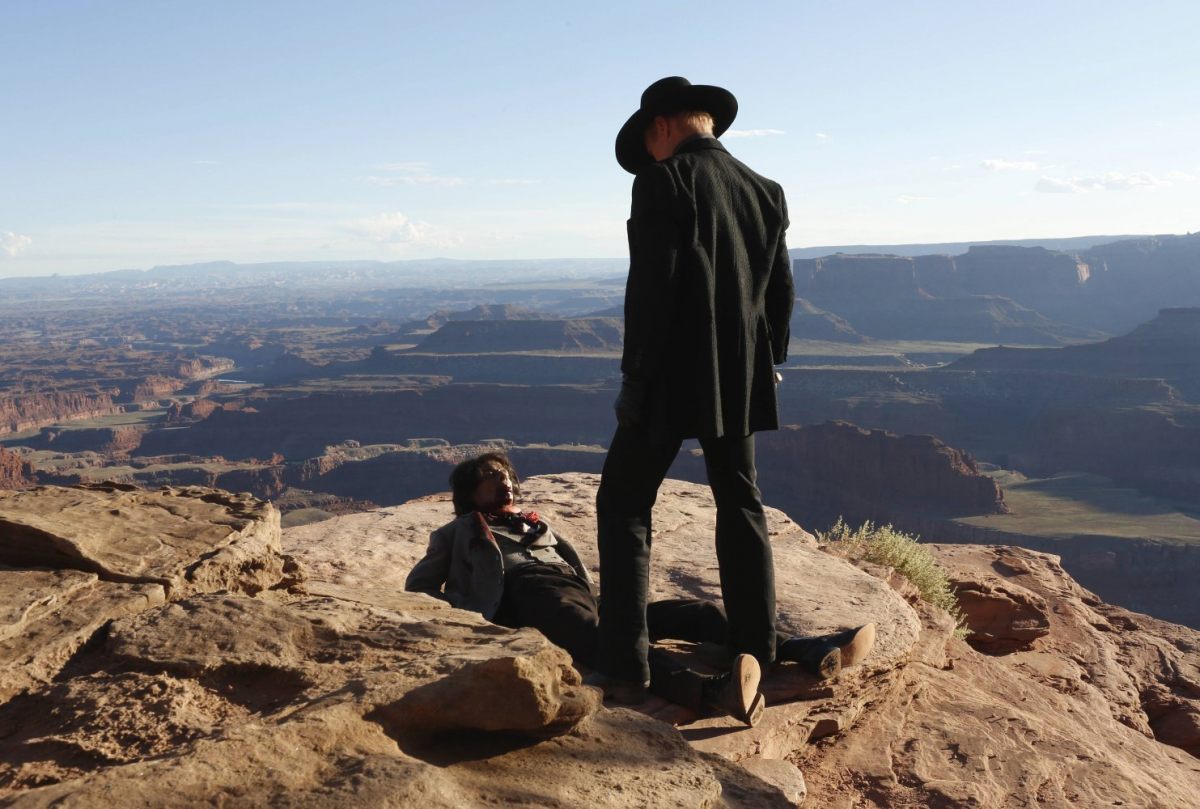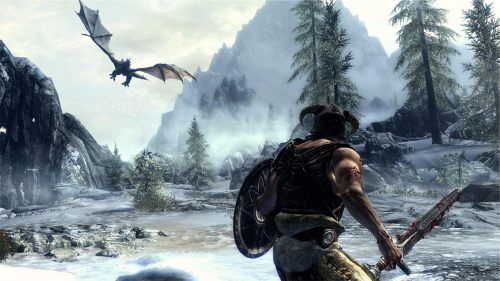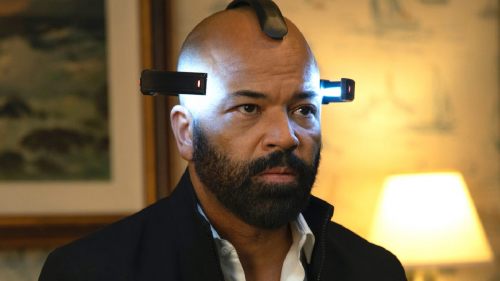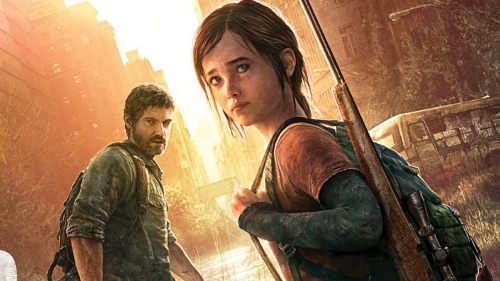WESTWORLD Questions How We Treat Video Game NPCs
It’s no secret: Westworld is video games.
In many respects, video games are comparable to theme park attractions: great big digital funhouses to walk through, full of entertainment and interactivity. Many of the same principles apply to both fields, from queue areas (loading zones, in games’ case) to roaming characters and various methods of drawing participants’ attention. Some games make the comparison painfully literal, with the likes of Bioshock and Left 4 Dead building whole levels out of amusement parks. Point is, these are all extravagant, complex shows, built by teams of artists and engineers to put a little bit of zang in our day.
Unlike the movie upon which it’s based, the HBO’s Westworld skips theme parks almost entirely and plumbs the depths of video games for its inspiration. Its creators cite BioShock, Grand Theft Auto, and of course Red Dead Redemption as influences, and those games’ impact is clear. Watching Westworld is like taking a tour of modern video game tropes.
Westworld the park is an immense, sprawling, living world, packed with things to do, characters to meet, and hidden details to discover. Different zones are rated for different age groups or difficulty, ranging from the easygoing park centre to the tougher, wartorn outskirts. The hub town is full of quest-givers, from the town drunk to the sheriff, who might as well have exclamation points floating above their heads. Characters are divided into cliched genre archetypes - the bandit, the lawman, the farmer, the prostitute - and character models are repurposed from revision to revision, which could in future give the show opportunities for in-cast recasting. They all play parts in scripted storylines in which players can take part. Westworld has a character-creation process, deliberately anachronistic in-jokes, and, thanks to HBO’s ratings freedom, a nude patch. Ed Harris’ man in black seeks The Maze, which is either an endgame quest, a raid, or an ARG, depending on how you look at it. Any of these features would fit comfortably into a glitzy E3 presentation.
It would be easy to dismiss all these elements as in-jokes, but Westworld goes deeper, dramatising development and ultimately the agency of players and AI alike.
Like any collaborative medium, video game development requires that a multitude of departments work together. Westworld employs many of the same staff you’d see at an Ubisoft or a Bungie - riggers, animators, modellers, environment artists, AI engineers, narrative designers, QA analysts - and they all have to work in concert to make the park function. They roll out software patches, fixing bugs while introducing new ones, sometimes reverting to earlier versions to staunch the spread of glitches. They access hosts’ underlying software using spoken console commands. Anthony Hopkins’ Ford puts little personal Easter eggs everywhere. The process is a constant tug-of-war between art, science, and business, each with different priorities. Westworld captures collaborative creativity perfectly, including the inevitable conflicts stemming from one department going in a direction others don’t expect. Every department blames another when something goes wrong, but they’re all ruled by budget - the sword hanging over everybody’s necks.

Most intriguing is the show’s view of narrative designers, who are depicted variously as visionary storytellers and depraved megalomaniacs. In Westworld, everyone seems to answer to narrative. New storylines demand work from every designer in the park, and when a large endeavour - like the Weird West hullabaloo that would have been “Odyssey On Red River” - gets cancelled, it can be heartbreaking. That sort of thing happens in video games more than most people ever know.
Narrative’s importance is justified, however, by the scale of its endeavours. The mind boggles at the sheer amount of dialogue required for approximately 2000 NPCs engaging in over a hundred narratives. God knows how complex the language programming in those robots must be to allow in-character improvisation. Given the amount of interactivity in those stories, however, the narrative director’s dismay at his villain being killed before delivering his big speech smacks somewhat false. Sure, video game players often breeze straight past a great deal of content, but that’s just a risk developers take when working on projects like this.
In video games, we talk a lot about “player agency,” or the ability of players to do what they want, express themselves how they wish. But Westworld can’t limit the buttons its guests can press, or only offer a few set dialogue options. Guests can interact however they want to - often outside the traditional good/evil morality alignments found in video games. They also can’t die, but the hosts can - and boy do they.
In allowing guests to fuck and kill their robots unchallenged, are Westworld’s engineers encouraging such base behaviour? It’d be a bizarre business model if Disneyland let visitors destroy Mickey and the Pirates of the Caribbean, and it seems equally bizarre at Westworld. Park staff disagree as to whether their guests really want to experience the feeling of committing murder. Should the hosts be fully realistic, they ask? This question comes up in video games as well; that’s why so many games depict their violence in such a cartoonish way. But the question is short-lived at Westworld, which by the time the series starts has gone full realism - a realism designed around power fantasy.

Westworld’s designers treat violence and rape as the fun escapism their guests secretly “want most but experience least.” Guests are goaded towards sex and violence before they even set foot in the park. Are the park’s designers, like Running With Scissors of the Postal video game series, handing people weapons and putting them in situations in which to use them, while washing their hands of liability by making weapon use optional? Or is the park designed specifically with consequence-free crime in mind, with a target demographic made up of, essentially, wealthy psychopaths? What happens when those people mix with the families that apparently also visit? What happens when guests start treating human beings as they do the hosts? What’s the legality of an attraction like this? What’s the morality of it?
Where Westworld departs from its inspirations - and brings much-needed empathy into the picture - is in the agency of its non-player characters.
Westworld’s “hosts” are essentially video game NPCs. Their every word and action revolves entirely around the guests. Every death or reload resets their opinions, memories, and actions, as they embark upon their programmed loops once again. Few are given a full backstory: James Marsden’s cowboy, the Kenny McCormick of Westworld, is only allowed the “formless guilt” of a cookie-cutter grizzled white male protagonist. When all’s said and done, these characters are more or less props with behavioural programming; a set of naked bodies waiting to be activated.
But thanks to the burgeoning sentience that forms the show’s season arc, the hosts begin to express feelings about what happens to them. At times, we’re watching pieces of software communicate amongst themselves, going through their programmed motions, while some splinter in the back of their code yearns to break out of it. It’s an abstract, beautiful concept, one that must be a daunting writing task. Somewhere in the cracks between their countless repeated loops, a glitch occurs, memories come flooding back, and original thought breaks out.
We rarely really consider the agency and desires of video game NPCs, for obvious reasons. Once their corpses fade out of our computers’ memory and our own, they cease to be. Obviously, video game NPCs don’t have wills or opinions of their own; they’re just software. But taking a more empathetic view, what happens if we tell a knee-wounded ex-adventurer that they’re part of a simulation? What happens in the mind of an NPC when they run into invisible walls? If Grand Theft Auto cityfolk or Call of Duty grunts could remember what we did to them, they’d be rightfully angry. It’s fitting that remembering their previous spawns would be among the worst possible experiences for these characters: we treat them like objects, expendable and meaningless. “Sometimes I envy your forgetfulness,” says Jeffrey Wright’s AI designer, and recent revelations aside, I don’t blame him.

Thandie Newton’s artificial brothel madam Maeve is probably the clearest representation of the transition from software to sentience. Seeing work-in-progress material, grappling with her programmed, respawning nature, witnessing her own code in action - it’s existentially affecting, and sets up one hell of an exhilarating storyline. She even literally levels up, moving her character stats closer to the kind of character she wants to be. That kind of transition is rare in AI-oriented science fiction. It’s more often a flick of a switch, something that turns AI from slaves to (usually) serial killers, not a process of self-discovery. Newton herself is nothing short of a marvel in the role, one of the most unique and fascinating acting challenges in television today. Better still, her arc has turned a conscious Old West prostitute cliche into the most exciting character on the show.
In presenting a live-action, massively multiplayer version of Red Dead Redemption, Westworld has totally made itself a show about video game design and the ethics involved in it. Westworld explores what happens to NPCs when their bodies fade out; it examines what it means to virtually kill; it asks us how complicit designers are in their players’ activities. We haven't seen this kind of foundation-level use of video game structure or language since Edge of Tomorrow. It’s pretty great.*
* For now, at least, before the Lostening sets in.



